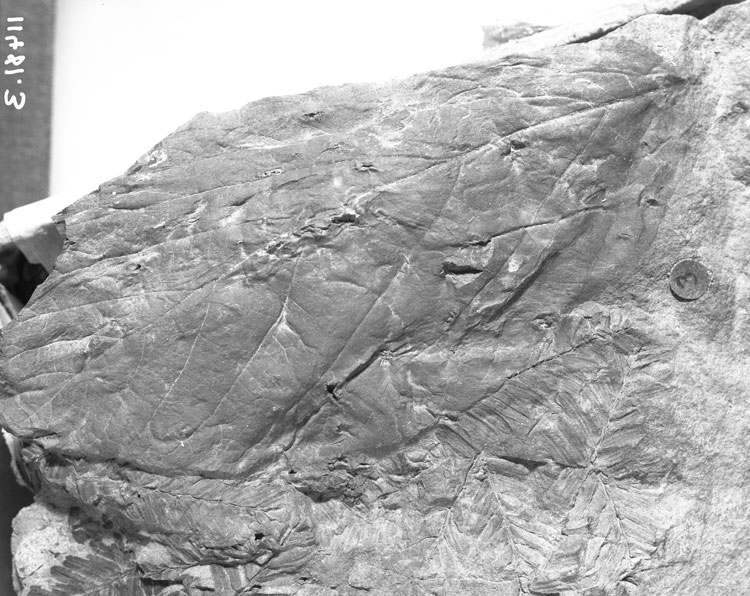Locality
USGS11481
69.382° Long. -148.725°
Sagavanirktok (B-3) Quad.
Sagwon section. Alternating beds up to 1.5 m thick of coal and gray shale containing clay ironstone concretions are exposed in a gully on the west side of the Sagavanirktok River. Plant megafossils were confined to the concretions which weathered to a rusty brown. These beds are probably laterally equivalent to those of localities 11479 and 11480.
Description
Leaf: simple; symmetrical (?); obovate (?); apex missing; base obtuse; margin finely toothed except at the base, teeth serrate with blunt acute apices, both apical and basal sides convex and acute sinuses; venation pinnate with brochidodromous secondaries; primary midvein moderate to weak, more or less straight, secondaries moderate to weak forming an angle of 35-45°, curved near the midvein becoming more or less straight or very slightly curved until near the margin where the curvature increases and the secondary bends back to join the superadjacent secondary at an acute angle, outer secondaries also present arising at angles of 45-65° forming loops on the abmedial (basal) sides of the secondary, third and higher order loops also present near the margin from which veins enter the teeth; two pairs of secondary veins nearest the base weaker than those above; tertiary veins percurrent, transverse, straight or nearly so when simple but often forked, angle of departure from secondaries approximately 90° on both ad- and abmedial sides; fourth order veins forming an orthogonal reticulate pattern.
Remarks
This poorly preserved, incomplete and distorted specimen can best be compared with the Paleocene species Celastrinites insignis (Heer) Bell (1949; Plate 58, Fig. 3; Plate 59, Fig. 4) which Brown (1962, p. 85) combined with eleven other species into 'Fraxinus' eocenica.The assignment to the extant genus Fraxinus (Tournefort) Linnaeus is unconvincing but it is possible that the leaf does represent a member of the Rosidae. The pinnate venation, semicraspedodromous marginal veins and transverse percurrent tertiaries are all features of the Rosidae (but they also occur in the Dilleniidae). The marginal venation is not well preserved but semicraspedodromy and teeth which might be interpreted as being vaguely Cunonioid (Hickey and Wolfe, 1975, p. 580) rather than Rosoid are present.
